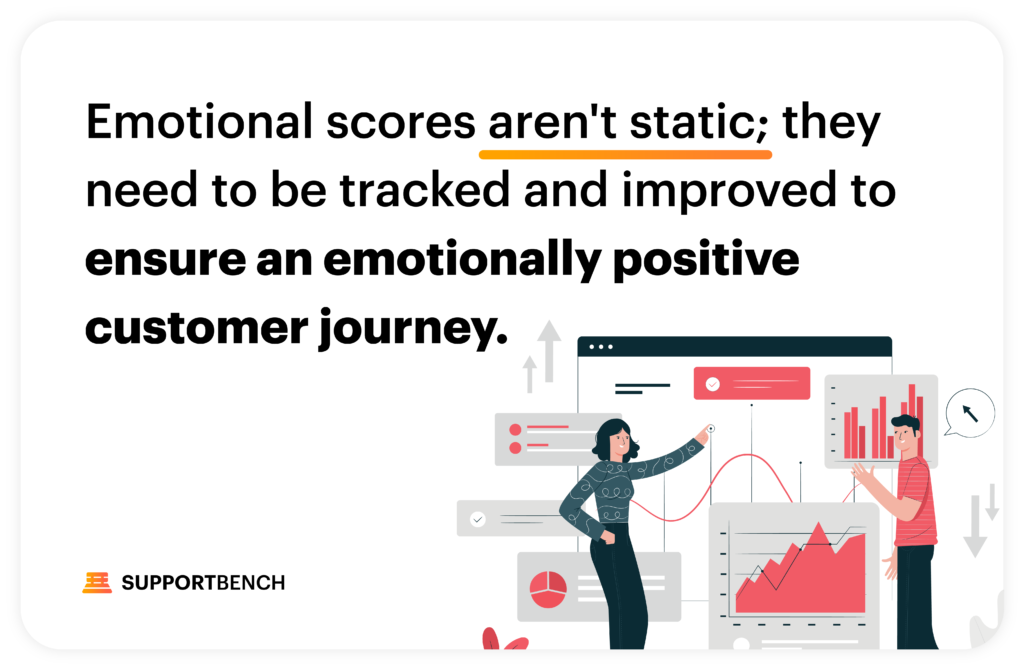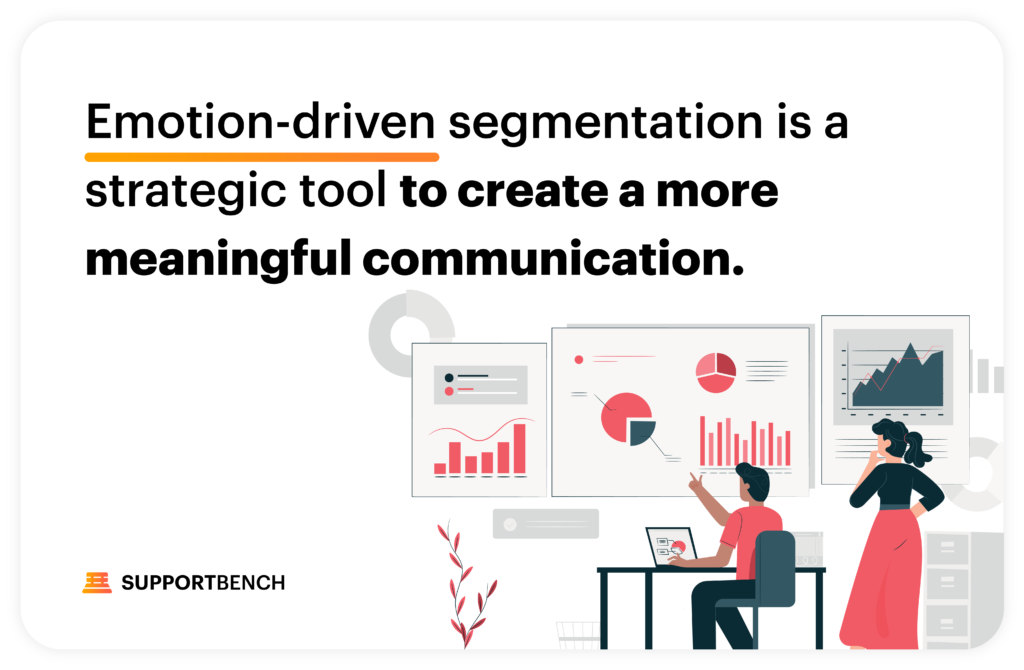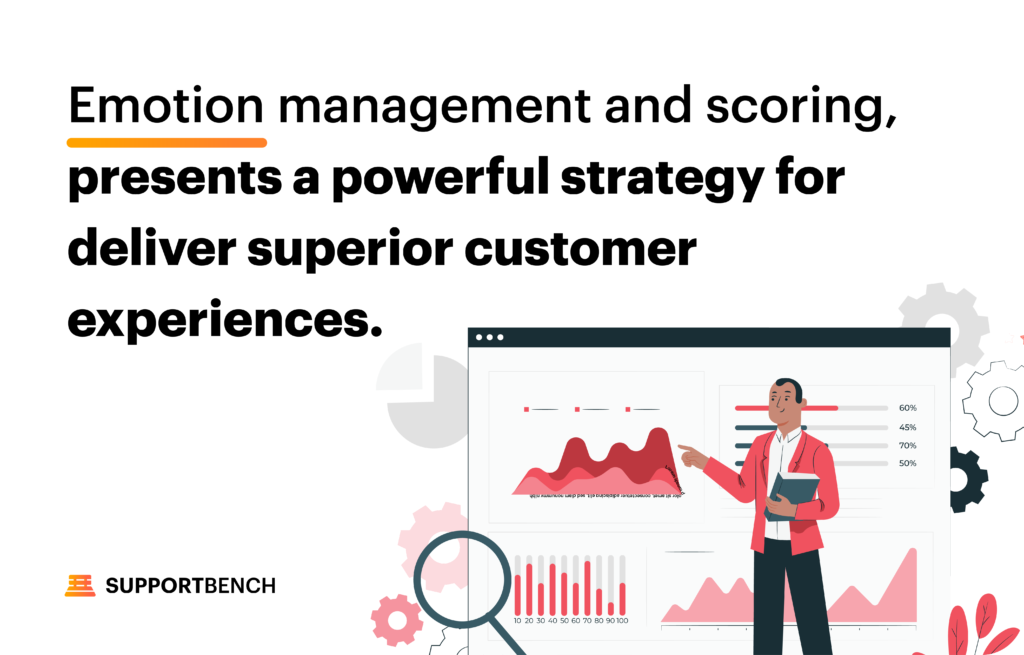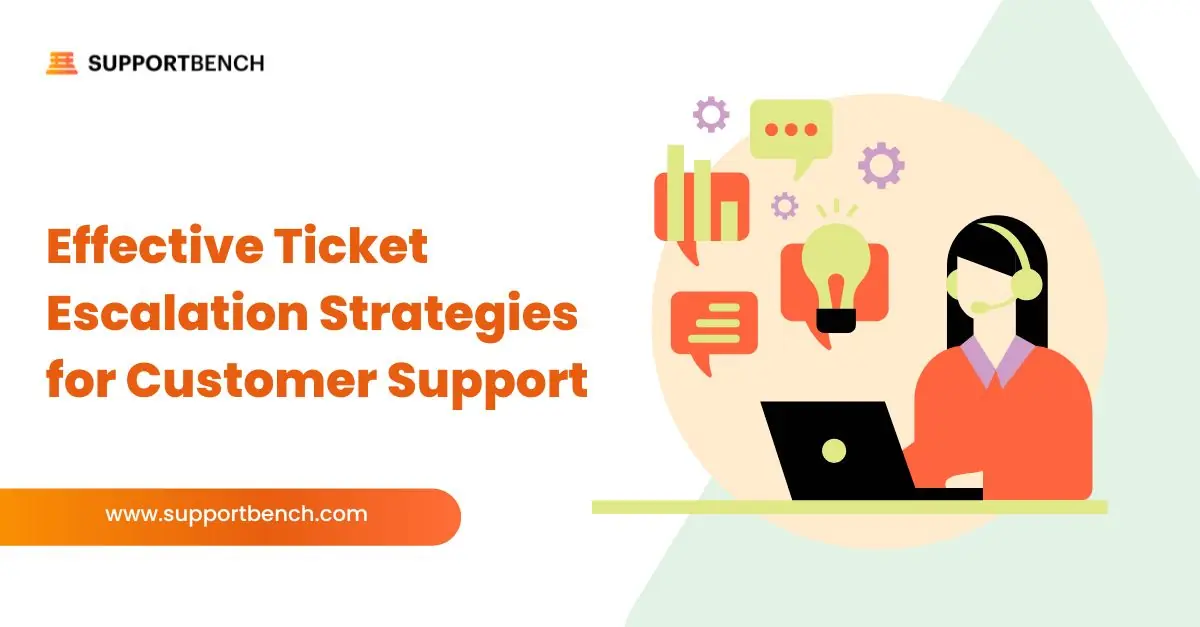In a world where technology increasingly dominates every aspect of our lives, the human touch remains an indispensable part of customer experience (CX). When customers connect with brands, they crave authenticity and empathy, and the most successful companies are those that can form genuine emotional connections with their customers. One way that modern businesses are achieving this is through the innovative use of emotional scoring, a technique that uses AI to identify, analyze, and understand the emotional state of a customer throughout their journey. By understanding the emotional pulse of their customers, businesses can tailor their interactions to provide the ultimate customer experience.
As we move forward in the digital age, mastering emotional scoring becomes an increasingly critical component for successful businesses. According to Forrester’s US Customer Experience Index rankings for 2022, 60% of customers expressed that they had emotionally positive experiences, highlighting the importance of fostering such experiences for customer retention and growth¹.
To underscore the significance of emotional scoring, let’s explore some less-discussed but highly actionable trends in customer experience. These insights can be immediately adopted by B2B enterprise leaders to elevate their customer service operations and better understand the integral role that emotional scoring can play in delivering a top-tier customer experience.
Personalizing CX with Emotion-Based AI

As we usher in a new era of customer service, emotional scoring, powered by artificial intelligence (AI), is rapidly gaining traction. With AI technology becoming increasingly mainstream, we’re witnessing a remarkable shift in how businesses approach customer experiences. According to a survey in 2021, a significant 56% of brands reported adopting AI in at least one function, a considerable jump from 50% just the year before. But this is just the beginning; the AI industry is set to grow at an even more accelerated pace. The worldwide AI software revenue is projected to reach an impressive $62.5B in 2022, marking a 21.3% increase from the previous year.
One might wonder, what’s fueling this rapid growth in AI? The answer lies in the evolving needs of modern customers who crave personalized experiences. A one-size-fits-all approach to customer service is no longer viable. In today’s highly competitive business landscape, personalization is the key to fostering customer loyalty.
Emotion-based AI brings this much-needed personalization to the table, introducing a whole new level of sophistication to customer interactions. This technology has the ability to analyze a customer’s tone, language, and mannerisms used in text or voice communication to infer their emotional state. Imagine being able to quantify a customer’s emotions – understanding not just what the customer is saying, but also how they are feeling. This is what emotional scoring accomplishes.
Emotional scoring translates the collected data into actionable insights, represented as scores. These scores provide a direct, objective measure of a customer’s emotional state during each interaction. For example, a customer’s communication might be scored on a scale of 1 to 10, where 1-3 represents negative emotions like frustration, 4-7 denotes neutral emotions, and 8-10 signifies positive emotions like satisfaction or delight.
What does this mean for businesses? It provides them with an opportunity to tailor their responses based on the customer’s emotional state. For instance, if a customer expressing frustration (score 1-3) contacts customer service, the representative can be immediately alerted to handle the situation with extra care and empathy. On the other hand, a satisfied customer (score 8-10) might be given information on loyalty programs or upselling opportunities.
Emotional scoring equips businesses with the knowledge they need to make each customer interaction more empathetic and personal, ultimately enhancing the overall customer experience. It is a practical, innovative approach to improving customer service that aligns perfectly with the widespread adoption and advancement of AI technology. In an increasingly digital world, emotional scoring is proving to be a groundbreaking method of elevating customer interactions, bridging the gap between technology and human emotions.
Prioritizing Emotional Journey Mapping

The customer journey is far from being merely a sequence of physical touchpoints. Instead, it is an intricate mix of experiences and emotions that leave a lasting impression on the customer. Traditional customer journey mapping, focusing primarily on these physical interactions, often overlooks a critical component: the emotional context. To bridge this gap and better understand customers, emotional journey mapping has emerged as a potent tool.
Emotional journey mapping delves into the intricate emotional landscape of customers’ interactions with a brand. It uncovers the emotional highs and lows that customers experience throughout their journey, providing insights into their emotional state at each touchpoint. This approach takes customer understanding to a new level, allowing businesses to proactively create emotionally positive experiences, thereby fostering stronger customer relationships.
The crux of emotional journey mapping lies in creating a comprehensive visual representation of customers’ emotional experiences throughout their journey. Each interaction, each experience, and each sentiment expressed by a customer is meticulously mapped. This is not merely a binary mapping of positive and negative experiences; it seeks to understand the nuances of customer emotions.
For instance, consider a situation where customers consistently express frustration during the checkout process. With emotional journey mapping, businesses can quantitatively capture this sentiment, assigning a low emotional score to this stage. This score then becomes a clear indicator of an issue that needs to be addressed to ensure a smoother, more satisfying experience for the customer.
To make this process actionable, businesses can integrate mechanisms such as regular surveys or direct feedback systems at every touchpoint to measure the emotional temperature of customers. The use of visually compelling emoticons or a scale of 1-10 can help customers easily express their feelings. The feedback received can then be translated into numerical emotional scores for each touchpoint.
For example, suppose the feedback system at the checkout process reveals that customers are consistently expressing frustration (scoring 2 on a scale of 1-10). In that case, businesses can interpret this as a clear sign that improvements are needed in this stage. Maybe the process is too complex, or perhaps technical glitches are causing problems. Whatever the issue, the low emotional score can help pinpoint it and guide appropriate changes.
These emotional scores aren’t static; they need to be consistently tracked and improved upon to ensure an emotionally positive customer journey. A customer might be frustrated at the checkout process one day, but with appropriate changes, the same customer could feel satisfied the next day. Tracking these fluctuations can help businesses adapt and evolve, always striving to deliver emotionally positive experiences.
In a nutshell, emotional journey mapping provides an innovative way to understand and enhance the customer journey. By focusing on the emotional context of each touchpoint, businesses can gain deeper insights into their customers, thereby creating experiences that foster loyalty and satisfaction. Emotion is at the heart of every customer interaction, and with emotional journey mapping, businesses are better equipped to navigate this complex terrain.
Emotion-Driven Customer Segmentation

Customer segmentation has long been a staple in the marketing strategy playbook. Businesses have traditionally segmented customers based on demographics or behavior, but there’s an often overlooked and potent parameter that can significantly enhance this strategy: emotion.
Emotion-driven segmentation is an innovative approach that involves grouping customers based on their emotional response to a brand or its products. This strategy recognizes that every customer is unique, not just in their buying habits or demographic characteristics, but also in their emotional responses. These emotional responses can provide invaluable insights into a customer’s relationship with the brand, allowing businesses to tailor their strategies more effectively.
Imagine segmenting customers not just based on their purchase history, demographic details, or even personal preferences, but also their emotional response to your brand. This isn’t as abstract as it might seem; the emotional scoring methods discussed earlier can provide the raw data needed for such segmentation. By analyzing customer interactions and their corresponding emotional scores, businesses can create segments like “Highly Satisfied Customers,” “Neutral Customers,” and “Dissatisfied Customers.”
The power of emotion-driven segmentation lies in the ability to tailor communication and marketing strategies to resonate with the emotional profiles of different customer segments. Each segment can receive communication specifically designed to improve their emotional experience, thereby driving customer engagement and enhancing overall customer experience.
A simple but effective tactic of crafting personalized emails for each customer segment. These emails would not just acknowledge the purchase history or preferences of customers but also their feelings towards the brand. For the “Highly Satisfied Customers” group, the communication could include gratitude for their positive feedback and offers for loyalty programs or personalized recommendations.
On the other hand, for the “Dissatisfied Customers” group, the communication should focus on empathetically addressing their grievances. The messaging could assure them that their feedback is taken seriously and inform them about the steps being taken to improve their experience. Such proactive, emotion-focused communication can significantly enhance the brand’s relationship with the customers in this segment, turning a potentially negative situation into an opportunity for improvement.
Similarly, for the “Neutral Customers” group, the communication could aim to turn their lukewarm feelings into more positive ones, perhaps by offering discounts, previews of new products, or access to exclusive content.
In essence, emotion-driven segmentation is a strategic tool that businesses can leverage to create more meaningful and resonant communication. By aligning marketing strategies with the emotional profiles of customers, businesses can enhance customer engagement, improve customer experiences, and build stronger, more emotionally connected relationships with their customers. In the era of personalized customer experiences, emotion-driven segmentation can provide a significant competitive edge.
Proactive Emotion Management

Proactive emotion management is a crucial component of customer experience strategies that goes beyond mere damage control. It involves foreseeing potential emotional concerns and tackling them before they have a chance to amplify. By doing so, businesses not only avoid negative experiences but also create positive ones, turning potential detractors into promoters.
Consider a scenario where a customer’s past interactions with a brand have persistently resulted in a low emotional score. Rather than waiting for the customer to voice their dissatisfaction or churn, companies can take the initiative to reach out and address their concerns. This kind of proactive approach conveys to the customer that their emotions matter and their concerns are heard, even when they haven’t explicitly voiced them.
An effective strategy to enable this proactive approach could involve implementing a system that flags customers with consistently low emotional scores for immediate follow-up. This system could use a set threshold to trigger alerts, allowing the customer support team to immediately step in and address the underlying issues. Such a system wouldn’t just be a problem-spotter but also an opportunity-finder to improve customer experience.
This strategy focuses on turning a potentially negative experience into a positive one. By addressing these issues proactively, businesses can avert the intensification of negative emotions. Moreover, such proactive actions can pave the way to convert a low-scoring customer into a high-scoring one, redefining their relationship with the brand.
But how can businesses anticipate and manage customer emotions proactively? The key lies in a deep understanding of emotional triggers, effective communication skills, and a high degree of empathy.
Emotional triggers can vary greatly among customers, but a common trigger is unresolved issues or problems. Addressing these promptly is vital in proactive emotion management. A recent study highlighted that customers are 2.4 times more likely to stick with a brand when their problems are solved quickly. Quick problem resolution doesn’t just tackle the immediate issue; it also conveys to customers that their concerns are valued. It helps to prevent negative emotional responses from escalating, consequently promoting a positive customer experience.
Proactive emotion management, coupled with emotional scoring, presents a powerful strategy for businesses to deliver superior customer experiences. It shifts the customer support paradigm from a reactive approach to a proactive one, making customers feel truly heard, valued, and satisfied. In an era where customer experience can make or break a brand, such proactive emotional management can be the differentiator that sets a brand apart.
Emotional Training for Customer Service Representatives
Even in the face of advanced AI technologies that power emotional scoring, the human element in interpreting and acting upon these scores remains indispensable. While artificial intelligence offers a remarkable ability to analyze and infer emotions from customer interactions, empathetic understanding and decision-making based on those insights is an inherent human ability.
This is precisely why a sound investment in emotional intelligence training for customer service representatives could be an absolute game-changer for your organization’s customer experience. It can significantly improve your team’s ability to recognize, understand, and react to the emotional states of customers, thereby offering a more personalized and empathetic customer service experience.
To be able to use the insights from emotional scoring effectively, customer service representatives need to be trained in recognizing and addressing emotions. The ability to spot subtle emotional cues, infer the underlying sentiments, and respond in a way that positively resonates with the customer’s emotional state is what can differentiate an ordinary customer experience from an extraordinary one.
One way to empower your customer service representatives in this regard is by creating a comprehensive guide of emotional cues and appropriate responses. This guide could be a handy resource for your team to understand the varying emotions customers may exhibit and how best to respond to them. It could cover a range of emotions, from joy and satisfaction to frustration and disappointment, along with suggested responses that are likely to resonate well with customers experiencing each emotion.
In addition to a guide, real-world simulation or role-playing exercises could be an extremely effective training method. By regularly engaging in role-play scenarios that simulate various customer interactions, customer service representatives can practice recognizing emotional cues, assigning tentative emotional scores, and responding in a way that effectively addresses the customer’s emotional state.
For instance, a role-play scenario could involve a customer expressing disappointment over a delayed delivery. The representative would need to recognize the emotional cue (disappointment), assign a tentative emotional score (low), and respond in a way that acknowledges the customer’s disappointment, provides reassurance, and offers a solution. Over time, such role-play exercises can equip representatives to handle a wide array of emotional scenarios, transforming them into empathetic problem-solvers.
In essence, while AI plays a vital role in facilitating emotional scoring, it is the human touch that truly brings these scores to life. Investing in emotional intelligence training for customer service representatives is a strategic move that can substantially elevate your customer experience, fostering stronger customer relationships built on empathy and understanding.
Emotional Scoring for Predictive Analysis
Harnessing emotional scoring for predictive analysis represents a progressive step that can offer businesses an unparalleled advantage. By scrutinizing the wealth of emotional data gathered, organizations can not just understand but also predict future customer behavior. This predictive power can help craft potent strategies that boost customer retention and satisfaction, effectively converting satisfied customers into brand advocates.
As businesses adapt to the continuously evolving landscape of customer experience, emotional scoring surfaces as an invaluable asset. The Customer Experience (CX) Management market’s global expansion, having reached USD 8.79 billion in 2021 and is projected to grow annually by 18.1% from 2022 to 2030, underscores the critical need for creating emotionally positive customer experiences. The takeaway here is clear: emotional scoring is emerging as the new frontier in customer experience. It’s a potent instrument that enables businesses to forge deeper, more significant, and emotionally resonant relationships with their customers.
One of the innovative applications of emotional scoring is in predictive analysis. Consider this: businesses could build a model to forecast future customer behavior based on their emotional scores. This predictive power could guide strategic decisions that drive customer satisfaction and loyalty.
For instance, customers who have consistently high emotional scores might be excellent candidates for a referral or loyalty program. Their positive emotional association with your brand implies they are likely to advocate for you. Offering these customers exclusive rewards or benefits could further enhance their loyalty and encourage them to bring new customers to your brand.
On the flip side, customers with consistently low emotional scores might need extra attention to prevent attrition. These customers could benefit from personalized communication, offers, or services that directly address their pain points and improve their experience with your brand.
Both these instances show how emotional scoring can be a practical, strategic tool in your customer service repertoire. By understanding and addressing your customers’ emotional needs, you create a superior customer experience that fosters loyalty, encourages customer advocacy, and drives business growth. In a world where customers value personalized experiences and emotionally resonant interactions, emotional scoring equips businesses with the insights to deliver just that.
Summing it up
While technology has greatly improved the efficiency and effectiveness of customer service, it is the emotional connections that ultimately form the bedrock of customer loyalty and satisfaction. As the great Maya Angelou once said, “People will forget what you said, people will forget what you did, but people will never forget how you made them feel.” As businesses move forward, integrating emotional scoring into their customer service strategies will be key to delivering a customer experience that leaves a lasting, positive impression.
In today’s competitive marketplace, making customers feel understood, valued, and cared for is more than just a nice-to-have. It is a vital business strategy that can drive customer retention, boost customer loyalty, and contribute to long-term business growth. As companies like Supportbench are showing, with the right approach to emotional scoring, businesses can ensure their customer service teams become the heroes of their organizations, enhancing customer satisfaction and driving growth in the process.















